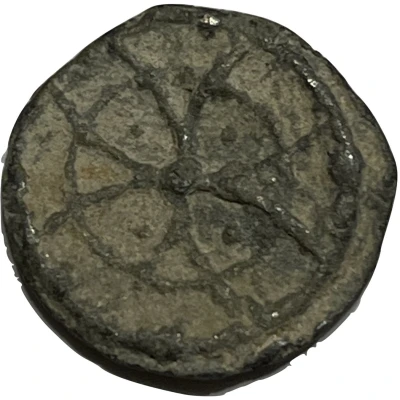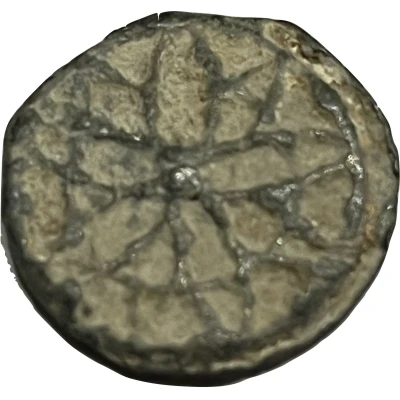


© dubfal (CC BY-SA)
Lead Token Petalled flower, Powell Type 1 ND
| Lead | 6.30 g | 21.09 mm |
| Location | United Kingdom (United Kingdom, British Overseas Territories and Crown Dependencies) |
|---|---|
| Type | Trade tokens › Work encampment, mine and wage tokens |
| Years | 1670-1820 |
| Currency | United Kingdom - Farm and Hop Tokens |
| Composition | Lead |
| Weight | 6.30 g |
| Diameter | 21.09 mm |
| Thickness | 2.07 mm |
| Shape | Round (irregular) |
| Demonetized | Yes |
| Updated | 2024-11-14 |
| Numista | N#82277 |
|---|---|
| Rarity index | 93% |
Reverse
Blank.
Edge
Plain
Comment
http://www.mernick.org.uk/lnc/dpowell/leadtokens.htmPowell's classification:
Petalled flower (Type 1). Apart possibly from initials, the commonest type. The number of petals varies between three and six, five or six being the most frequent. Occasional pieces, usually larger, have the petals superimposed on a second design.
It is not clear what the many varieties of lead token were used for. Uses included as hop tokens; for tallying of bushels; as ferry tokens; counters; gaming counters; small change; for ecclesiastical purposes; or for other agricultural uses.
The cultivation of hops was a popular industry, first because it was very profitable, and secondly because it employed labour for almost all the year, " Planting, Soiling, Houghing, Poling, Tying and Picking."
All the picking had to be done in a few weeks, many thousands of pickers were required. These came chiefly from London, for “a holiday with work and pay," and were known as" furiners."
Payment for picking was arranged through the medium of tallies and hop-tokens. These showed the number of bushels picked, and were the basis of payment after the rate was agreed upon, which sometimes took several days.